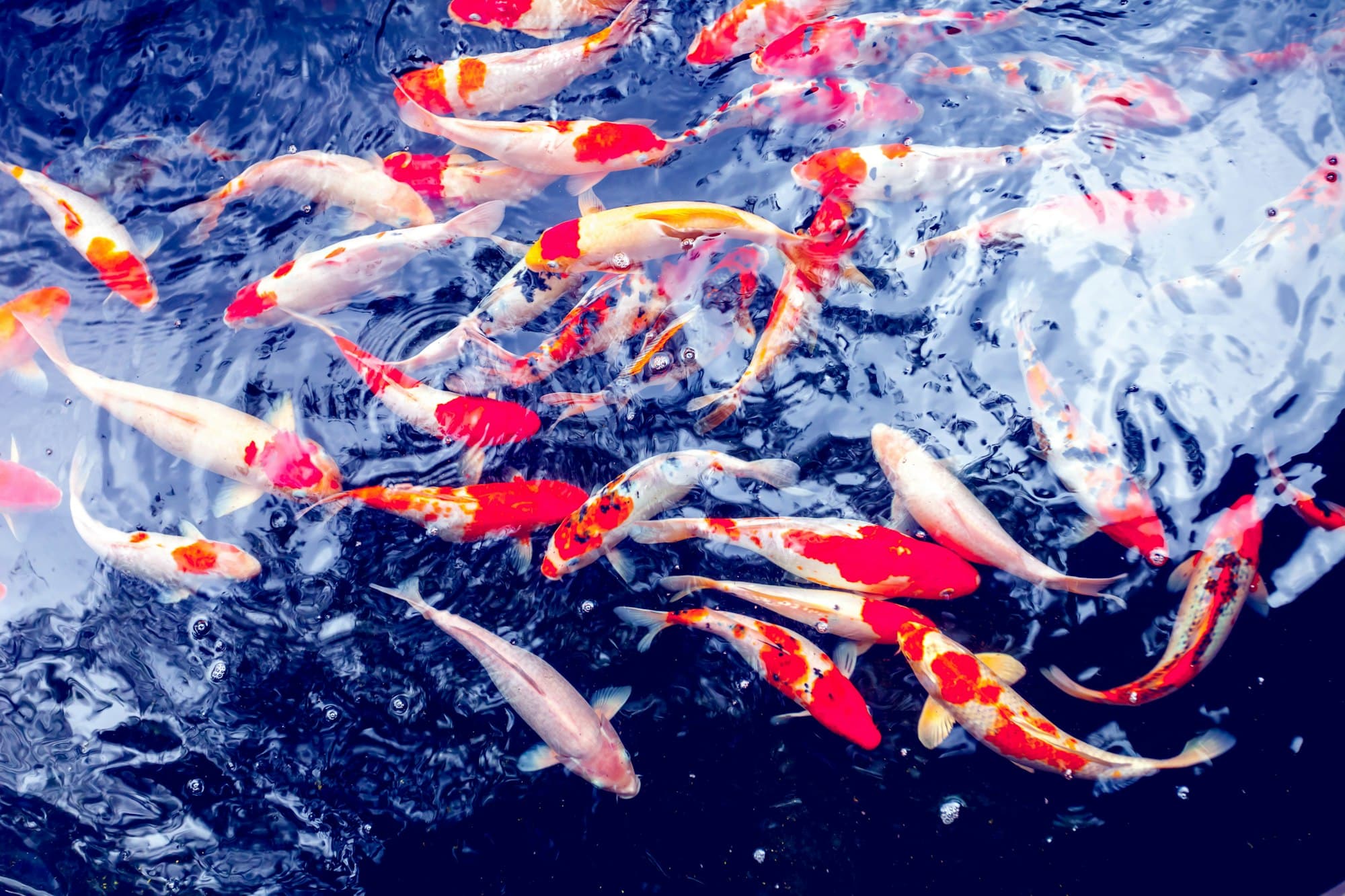What Are the Best Practices for Setting Up a Backyard Pond for Koi Fish?

Setting up a backyard pond for koi fish can be an exciting, yet challenging project. Koi are stunning creatures – they add a splash of color and elegance to any water feature, making them a popular choice for many pond enthusiasts. However, it’s not as simple as just digging a hole, filling it with water, and throwing in some fish. These majestic aquatic creatures require specific conditions to thrive, and creating a suitable habitat for them demands careful planning and execution.
What exactly does it take to create a backyard haven your koi will love? Let’s delve into the best practices for setting up a pond, covering everything from design and build to filtering and maintenance.
In the same genre : What’s the Best Approach to Introducing New Fish to a Community Aquarium to Minimize Stress?
Step 1: Designing Your Koi Pond
Creating a thriving habitat for koi fish begins with a well-thought-out design. Before you start digging, you need to consider some crucial factors.
Size and Depth
Also read : How to Develop a Desensitization Program for Dogs with Severe Thunderstorm Phobia?
Size matters when it comes to koi ponds. Koi are large fish that require ample space to navigate. Moreover, these fish grow to the size of their environment, so a bigger pond will lead to bigger koi. Aim for a minimum of 1,000 gallons, but remember, the bigger, the better.
Depth is another significant factor. Your pond should be deep enough to protect your koi from predators and extreme weather conditions. A depth of 3 to 4 feet is typically recommended.
Location
Choose a location that complements your landscape yet provides some level of protection for your koi. Keep it away from trees to avoid leaf litter and consider a location where you can view and enjoy your koi pond easily.
Step 2: Building Your Pond
Once you have your design, it’s time to build. This step involves digging, installing a pond liner, and creating a landscape around the pond.
Digging and Lining
Dig your pond according to the design you’ve planned out. At this stage, be sure to check for any sharp objects or roots that could potentially damage your liner.
Select a quality liner. Liners help keep the water in your pond and protect your koi from harmful elements in the soil. It’s worth investing in a durable, fish-safe liner to ensure a long-lasting pond.
Landscaping
Landscaping is essential for both aesthetics and your koi’s happiness. Add a variety of plants to provide shelter for your koi and to enhance the pond’s natural beauty.
Step 3: Setting up the Filtration System
A proper filtration system is crucial to keeping your koi pond clean and healthy. It will remove harmful compounds and particles from the water, helping to keep your koi healthy.
Mechanical Filters
Mechanical filters remove solid particles from the water. These filters will help keep your pond clear, allowing you to see your koi as they swim.
Biological Filters
Biological filters are essential for the breakdown of harmful waste products. These filters house beneficial bacteria which convert harmful substances like ammonia into less harmful nitrates.
Step 4: Adding Your Koi
Introducing koi to your pond is an exciting moment, but it must be done carefully.
A vital first step is to ensure your pond’s water is safe for your koi. Test the water for pH, nitrite, nitrate, and ammonia levels. If all is well, you can proceed to add your fish.
When adding your koi, float the bag they came in on your pond’s surface for about 15 minutes. This process will help equalize the temperature between the pond water and the water in the bag, reducing stress for the fish.
Step 5: Maintaining Your Koi Pond
Once your koi are settled in their new home, ongoing maintenance will be necessary. Regular checks and cleaning of your filtration system, monitoring water quality, and feeding your koi a balanced diet are all part of the work.
Remember, a healthy pond encourages healthy koi. Therefore, keeping your pond in top shape will ensure your koi flourish. Scheduled maintenance will make this task less daunting and help to identify any potential problems early.
When it comes to setting up a koi pond, remember that patience is key. It might take some time before your pond is fully established. But once it is, you can sit back, relax, and enjoy the mesmerizing beauty of your koi.
Step 6: Monitoring Water Temperature and Quality
Keeping a careful eye on the water temperature and quality in your koi pond is a crucial part of maintaining a healthy environment for your koi.
Water Temperature
Koi fish thrive in water temperatures that range from 59 to 77 degrees Fahrenheit. Extreme temperatures can cause stress and even death. Therefore, monitoring and maintaining the water temperature within this range is a vital part of koi pond maintenance. During cold winters or hot summers, you might need to use a pond heater or cooler to keep the water at the right temperature.
Water Quality
Water quality is another key factor in keeping your koi healthy. Regular testing of the pond water will allow you to keep an eye on levels of ammonia, nitrite, nitrate, and pH.
Ammonia and nitrite should be as low as possible, ideally zero. If levels are high, this could be a sign that your biological filtration system is not working properly.
The pH level of your koi pond should ideally be between 7.0 and 8.6. A pH level below 7.0 can cause stress and even death to your koi.
Beneficial Bacteria
Beneficial bacteria are the heroes of your pond’s ecosystem. These microscopic organisms convert harmful substances like ammonia into less harmful nitrates. Adding a bacteria booster to your pond can help ensure a balanced ecosystem and a healthier environment for your koi.
Regular monitoring of these factors will ensure that your pond water remains clean and healthy for your koi, promoting their growth and longevity.
Step 7: Protecting Your Koi Pond
After you have mastered maintaining the water quality and temperature, the next step is to protect your koi pond from external threats.
Predators
Common predators for koi include raccoons, birds, and cats. To protect your koi, consider installing a pond net or decoy predators.
Algae
Algae can quickly take over a pond and deplete the oxygen levels, which is harmful to your koi. Regular cleaning, along with the use of algaecides, can help control algae growth.
Disease
Regular health checks of your koi can help detect any signs of disease early, allowing you to treat the fish before the disease becomes severe.
Protecting your koi pond requires constant vigilance but will ensure a safe and enjoyable home for your koi.
Conclusion
Building a koi pond in your backyard is an exciting project that can bring beauty and tranquility to your space. However, it’s not a process to be rushed or taken lightly. Following these steps will ensure you create the optimal environment for your koi fish to thrive. It’s a commitment of time, energy, and resources, but the end result – a vibrant, thriving koi community – is well worth the effort. And with patience, commitment, and a bit of hard work, your backyard will be transformed into a stunning aquatic landscape, a haven for your beautiful koi.
